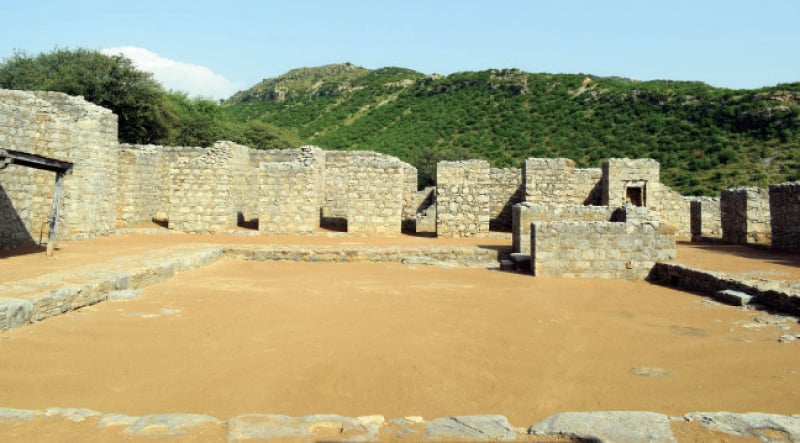Julian, The first University of Buddhism

Julian is an ancient monastery of a Buddhist university in district Haripur of KPK, 30 km away from Islamabad near to Taxila. These ruins are located on the top of a mountain; they are very similar to Mohra Muradu monastery, which is just 1 km away from Julian. In Buddhism, we found many universities in which the followers of Gautama Buddha came from very far areas to learn his teachings.

The Julian university was constructed during the initial stages of Buddhist expansion beyond the Indian subcontinent when the area was under the control of the Kushan Empire. The Kushans, nomadic people originating from the Eurasian steppe, established dominion over a crucial segment of the Silk Road, which connected China and India to the Mediterranean region. The ruins of these university were found in 1916-1917. The previous name of Julian was “Jawaliyan”, which meaning has “Dervish Throne”.
Julian is considered most ancient and first university of Buddhism, which is located on 300feet high Mountain. There are 200 stairs to go to the university. These ruins are considered to be very worthy for Buddhist Culture and can play an important role in promoting religious tourism in Pakistan. The ruins of Julian’s consists of two parts, which is one big stupa and the other is an ancient Buddhist university.
Although the primary Stupa at Jaulian has suffered substantial damage, the complex boasts twenty-seven subsidiary stupas in various states of disrepair. These subsidiary stupas encircle the main Stupa and occupy the adjacent courts. Additionally, the courts feature fifty-nine chapels adorned with depictions from the life of Buddha. These chapels serve as symbolic representations of significant events in Buddha’s life.
In front of the main manti stupa is the “Alan Buddha”, which Buddhists believe to be like the Messiah. Even today, Buddhists from China, Thailand, Japan and other countries make seven rounds around this shrine and wax before the Allan idol. Lights are lit. There is a hole in the navel area of the idol. Duas are offered by placing the index finger of the right hand in it.
The central manti stupa is designed to represent the seven earths and seven heavens. A small round stupa above it reveals the world. Various scenes of worship are built on the seven earthy layers, and the umbrella-like dome above the world represented the seven heavens.

The second section of the Jaulian Buddhist University comprises the University building itself, situated above the synagogue. At the entrance, in front of the steps leading from the synagogue to the university, stands a temple adorned with statues of Buddha and other deities. The eastern wall of the temple is adorned with sculptures depicting Buddha in a meditative pose. Flanking Buddha on either side are two standing idols, while two priests or attendants stand behind him. One attendant bears a knife, while the other serves as Buddha’s bodyguard, holding a magical weapon. The original sculptures have been transferred to the Taxila Museum, while copies are displayed here.

The first floor of the university, dating back to the Buddhist era, encompasses a courtyard and living quarters for the monks. The main entrance of the university faces west. On the eastern side of the university, a small door leads to the assembly hall and other common rooms. To the north, there is a room designated as a temple, with a staircase adjacent to it, providing access to the upper floor. The university is a two-story structure. The lower floor consists of twenty-six rooms used as accommodation for the monks, while the upper floor features an equal number of rooms. This allows for a total capacity of fifty-two occupants. These detailed elements of the Jaulian Buddhist University offer a glimpse into the architectural layout, functionality, and daily life within this ancient educational institution.




